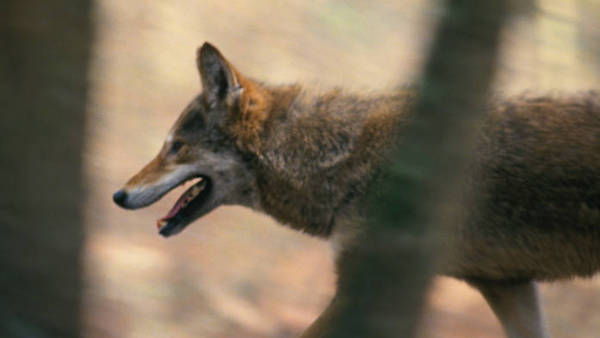SEJournal Online is the digital news magazine of the Society of Environmental Journalists. Learn more about SEJournal Online, including submission, subscription and advertising information.
 |
| The red wolf (canis rufus), first listed under the Endangered Species Act more than 50 years ago, saw its population grow under a recovery program that was then abruptly halted. Photo: John and Karen Hollingsworth/USFWS Endangered Species, via Flickr Creative Commons (CC BY 2.0). |
Inside Story: How Reporting Helped Reverse Collapse of Red Wolf Reintroduction Program
Journalist Jimmy Tobias’ reporting for The Nation on the plight of red wolves is a reminder of the power of journalism to do good, in this case by prompting the federal government to change its mind about abandoning a reintroduction program. That’s how judges viewed the project and its “mesmerizing use of public records” in honoring Tobias with first place for outstanding small market feature story in the Society of Environmental Journalists’ 21st Annual Awards for Reporting on the Environment. “It is a story exhaustively researched and beautifully told,” the judges noted, and “demands that readers come to care about these creatures.” SEJournal Online recently caught up with Tobias by email. Here is the conversation.
SEJournal: How did you get your winning story idea?
Jimmy Tobias: A former federal official suggested I look into the collapse of the red wolf reintroduction program.
SEJournal: What was the biggest challenge in reporting the piece and how did you solve that challenge?
Tobias: The biggest challenge was sifting through a large collection of rather dry documents and trying to use their contents to establish a coherent narrative for the story.
SEJournal: What most surprised you about your reporting?
What surprised me was how little justification
the federal government had when it allowed
the red wolf reintroduction program to collapse.
Tobias: What surprised me was how little justification the federal government had when it allowed the red wolf reintroduction program to collapse. It was a pretty stunning abdication of responsibility on the part of the U.S. Fish and Wildlife Service.
 |
SEJournal: How did you decide to tell the story and why?
Tobias: I received grants from the Alicia Patterson Foundation and Type Investigations to work on a series of investigative pieces looking into the U.S. Fish and Wildlife Service's weak enforcement of the Endangered Species Act. This story was one in that series.
SEJournal: What would you do differently now, if anything, in reporting or telling the story and why?
Tobias: I would have sued earlier to force the federal government to release more FOIA records. I continue to get documents that relate to this story, and it would have been nice to have them earlier.
SEJournal: What lessons have you learned from your story?
Tobias: This story was really satisfying for me because after its publication the Fish and Wildlife Service radically changed its policy and revived the red wolf reintroduction program. Document-based reporting can really help make change and this story confirmed that for me.
SEJournal: What practical advice would you give to other reporters pursuing similar projects, including any specific techniques or tools you used and could tell us more about?
Tobias: File FOIAs as early as possible when pursuing a story like this.
SEJournal: Could you characterize the resources that went into producing your prize-winning reporting (estimated costs, i.e., legal, travel or other; or estimated hours spent by the team to produce)? Did you receive any grants or fellowships to support it?
Tobias: I received an Alicia Patterson Foundation grant that helped fund my research and reporting for this story. My expenses were mostly related to travel to and from North Carolina.
SEJournal: Is there anything else you would like to share about this story or environmental journalism that wasn’t captured above?
Tobias: I'm really grateful to SEJ for the recognition. It means a lot.
[Editor’s Note: Visit our 2022 awards page to watch a brief video summary from Tobias of what drove the collapse of the reintroduction program.]
Jimmy Tobias is a contributing writer at The Guardian and a contributor at The Nation. An investigative reporter, he primarily covers wildlife, public lands, public health and the politics of conservation. Tobias was formerly a trail worker with the U.S. Forest Service.
* From the weekly news magazine SEJournal Online, Vol. 8, No. 14. Content from each new issue of SEJournal Online is available to the public via the SEJournal Online main page. Subscribe to the e-newsletter here. And see past issues of the SEJournal archived here.












 Advertisement
Advertisement 



